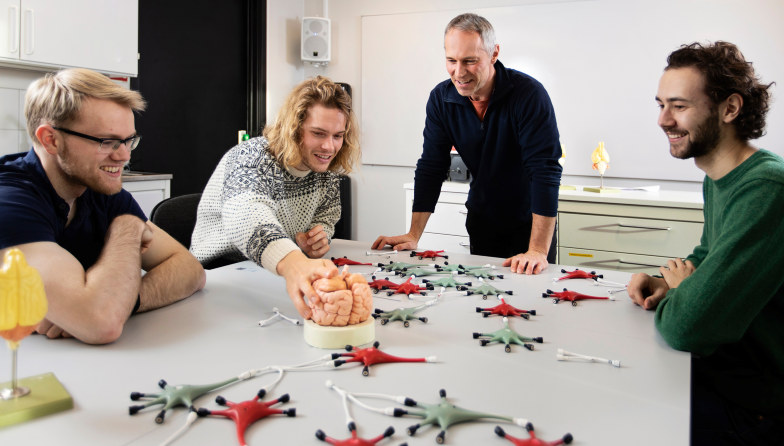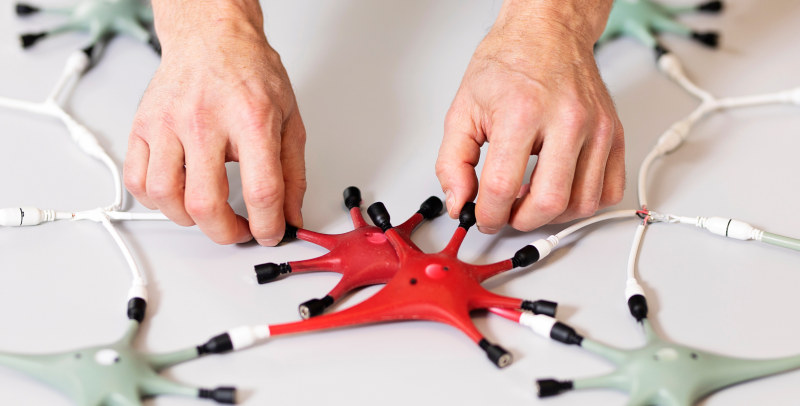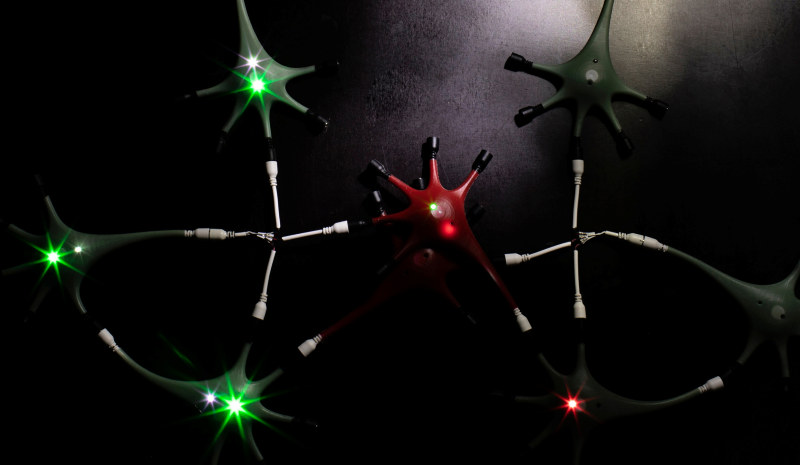Building brains – Research – Department of Teacher Education
Building brains

Goal of the project
The goal of the project is to innovate teaching about the nervous system. This organ system is the physical substrate for motivation, learning and memory. Anyone who offers education, regardless of subject area, will therefore benefit from a proper understanding of this system. However, two major obstacles to understanding the nervous system are its complexity and inaccessibility. The nerve cells are small, with thread-like structures extending long distances throughout the body (including the brain) and connect to thousands of other cells. In addition, it is the nerve signal and precisely where it spreads throughout the network of nerve cells that is crucial for what we sense, perceive, feel, think, do and learn. These obstacles make the topic appear abstract and difficult for most students. The teaching often becomes lecture-based, which may reduce student motivation and therefore also learning outcomes. It is therefore a major pedagogical need for teaching tools that concretize and facilitate student-active learning in this topic.

Project activities
To innovate teaching about the nervous system, we attempt to concretize the relationship between structure and function of neural networks. To accomplish this, we will carry out four categories of activities:
- The first category of activities is to develop an electronic brain building kit consisting of connectable, electronic neurons (projection neurons and inter neurons) that can be connected to form any neural network.
- The second category of activities is to develop sensors (sensory cells) that can provide biological information to the neural network.
- The third category of activities is to develop actuators (muscles) which can demonstrate the outcome of information processing in different neural networks.
- The fourth category of activities is to implement the brain building kit in a pedagogical context. Here, the teaching tool will be integrated into a teaching strategy and tested on the target group, which includes pupils in primary and secondary school, as well as students at universities and colleges.
This research project is associated to the research group «Neurodidactics».
The project is funded by the University of Norway, Rector of NTNU, and the Department of Teacher Education, NTNU.

Leader of research project
Members of research project
-
Jardar Karel Cyvin Professor in Science Education
+47-73559787 jardar.cyvin@ntnu.no Department of Teacher Education -
Kari Feren
+47-73559875 kari.feren@ntnu.no Department of Teacher Education -
Kristin Elisabeth Haugstad Associate Professor
+47-73412144 kristin.haugstad@ntnu.no Department of Teacher Education -
Espen Hoff Assistant Professor
+47-73412641 +4792222656 espen.hoff@ntnu.no Department of Teacher Education -
Lars Magne Lundheim Affiliated
+47-73591417 +4790634941 lars.lundheim@ntnu.no NV Faculty Administration -
Jan Tore Malmo Associate Professor
+47-73412089 jan.t.malmo@ntnu.no Department of Teacher Education -
Nils Kristian Rossing
+47-73551191 nils.rossing@ntnu.no Department of Physics -
Trygve Solstad Associate Professor
+47-73412594 +4795258917 trygve.solstad@ntnu.no Department of Teacher Education -
Ragnhild Lyngved Staberg Associate Professor
+47-73559870 +4799744855 ragnhild.l.staberg@ntnu.no Department of Teacher Education
Anders Johann Nesheim Boye, research assistant
Markus Kvello, research assistant
Henrik Nyholm, research assistant
Benjamin Nedregård, research assistant
Trym Sneltvedt, research assistant
